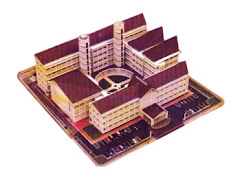Education Software - Facts
Education encompasses teaching and learning specific skills, and also something less tangible but more profound: the imparting of knowledge, good judgement and wisdom. One of the fundamental goals of education is to impart culture across the generations. Education Softwares help in formation of scholl administration systems , distant learning, streamlining college syllabus in big institutes etc.
| Education Software - Download Resources | |||||||||||||||||||||
|
| ||||||||||||||||||||
Education Software - Solution Providers
Interactive Educational Software
Educational software for reading, writing, and math that works. Immediate feedback for students. Automatic scoring for teachers and tutors. Free trials.
School Management Solution
AAL is enterprise management of student information. Everything from student records and attendance to fees management rolled into one secure and easy-to-use software package.
Buy Kids Educational Software - Cheap
Surplus CD ROM offers a huge selection of children's educational and game software, at cheap prices, for toddlers to teens, for PC and Mac, all at discount prices.
Software Development Career Education
Prepare for a career as a software developer at Northface University in Salt Lake City, Utah. Earn your BS, MS or an MBA in Enterprise Informatics in one of our accelerated programs.
Educational Software at OfficeDepot.com
Shop Office Depot and get free shipping on orders of $50 or more. Save on school supplies, dorm room essentials, technology, and more. Get what you need and we'll deliver it, free.
Edu-Technology Has Education Software
Edu-Technology offers education software at special discounts for institutions and students with a focus on higher education. We carry quality lines such as Hyperchem and Primal Pictures.

 Rather than create one massive comprehensive package that would take weeks of class time to learn, we decided to write many small packages. Each of these packages is designed to do one thing very well, and be used effectively with no, or minimal, training.
Rather than create one massive comprehensive package that would take weeks of class time to learn, we decided to write many small packages. Each of these packages is designed to do one thing very well, and be used effectively with no, or minimal, training. 









